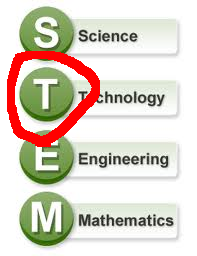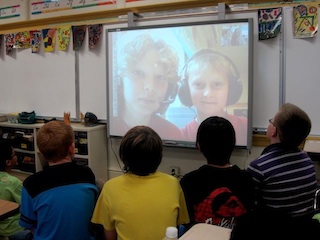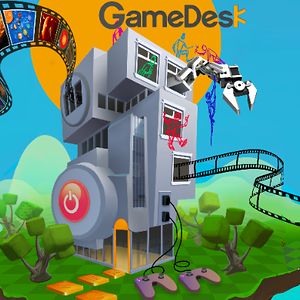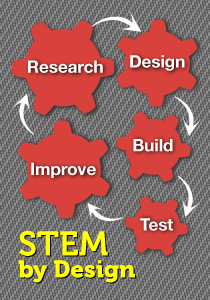STEM with a Capital “T”
A MiddleWeb Blog
Something puzzles me about STEM. I know that STEM means more than just teaching science or technology or math or engineering. STEM means using a truly integrated approach to these studies.
I look up “STEM lessons” and I find some lessons focused around a science topic or a math topic that uses a problem-solving approach. I find others that actually integrate science and math through an engineering process.
But what about the T in STEM? Are we placing too little emphasis on the T in our STEM lessons? Just where does technology fit, and what does the T in STEM lessons look like, anyway?
As far as I can tell, there are at least 3 ways of thinking about the T in STEM.
Technology as the outcome of the lesson
To understand one approach to integrating the T into STEM, try this in your classroom:
• 
• Invite some volunteers to share their answers. Chances are they’ll mention electronic equipment such as a computer, a smart board, a projector, and so on.
• Give them this definition of technology: Technology is any product or process made to meet a human need or want. Let them chew on that for a moment; then clarify by explaining that when we create something to solve a problem or to satisfy a want, the thing we create is a technology.
• Ask them to again look around the classroom and list as many examples of technology as they can. They may begin to understand that everyday objects– objects such as chairs, pencils, floor tile, and so on – are also technologies because they are made to meet specific needs.
Using this way of thinking, it’s tempting to say that all STEM lessons include technology by default. After all, a true STEM lesson focuses on students’ creating things (and sometimes processes) for solving real-life problems. Whatever they create can then justifiably be called technology. Voila! We have included technology in our STEM lessons!
But is that enough T? Here’s another way of thinking about T:
Technology as tools integration throughout the lesson
In this kind of STEM lesson, educational technology is integral to the student success. The T in STEM requires that students use digital tools, along with other types of education technology programs, to learn content, do research, and understand the problems. True technology integration in this sense would also involve students in using technology to communicate and network in order to learn and solve problems.

This seems a good integration of technology into the STEM lesson, and indeed it is when the technology is integral to the lesson. According to Cisco, STEM lessons that engage students in using digital technology will better educate and prepare them for the kinds of careers they need for the workforce.
However, some thinking about the T in technology involves even more T.
Technology as the lesson driver
Some of the more out-of-the-box STEM thinking revolves around the idea that video games can help develop STEM skills and systems thinking. In fact, video games and virtual learning communities are gaining increased attention as a means of fostering STEM skills.

Linda P. Rosen, CEO of Change The Equation, says that the current view of video games as a destructive drug or mere entertainment is “rapidly changing as more foundations, business leaders and even government leaders, including President Obama, see games as a means of getting students more engaged in substantive STEM learning.”
I’m mulling over this last idea – STEM video games – and I wonder what other educators think. I can see that it would be great for kids to create, share, and interact in the classroom in the same ways they absorb information in the real world. When used in this way, technology is more than a component of the STEM curriculum. It actually immerses kids in a virtual environment for their learning. In this scenario, the T is the STEM lesson. What do you think?
Technology and the teachers
One thing to remember is that integrating technology into STEM in a meaningful manner requires that all STEM teachers be able to use, facilitate, and support technology skills. It requires teachers to adopt new ways of using classroom technology and use them to help kids get more authentic, immediate, and personalized learning experiences.
Newsflash! This means teachers must have more professional learning opportunities and ongoing support as they become comfortable with these technologies. And it means that the technology must actually be available and in working condition.
Who’s putting the T in STEM out there? Give us the how, what, when, why.



































I believe we are still missing what T means for some of us using the STEM concept. In our district technology also means tools used in the trades, such as saws, welders, and good old hand tools used to engineer solutions to problems. These tool are still the core of engineering in the 21st century.
Absolutely right, Jeffrey! Thank you so much for broadening the direction of the technology conversation. One curriculum generally left out of the conversation when talking about STEM is Career and Technical Education (CTE) courses. I have a chapter devoted to CTE-STEM education in my recent book. While CTE goes beyond saws, welders, and other hand tools, it certainly includes those. I really need to write another post that updates and broadens the view I present here.
Thanks so much for your helpful comment.